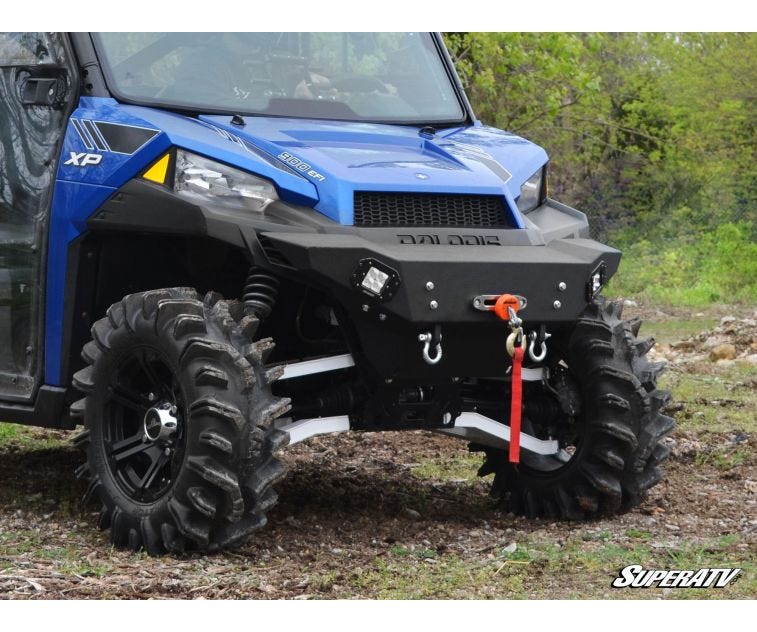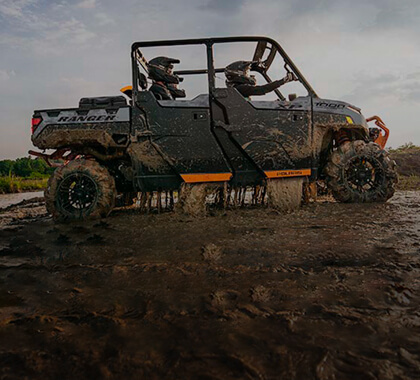How to pick a Winch and Winch Mount for your Polaris Ranger
Apr 14th 2020
If you’re reading this blog, chances are you’ve given some thought to adding a winch to your Ranger. First of all, great choice! Whether you’ve got years of experience or are just starting out in your new rig, having a winch can be handy in almost any situation. But you may be wondering, how exactly should you go about choosing the best winch for your Ranger? There are a variety of factors you should take into consideration when shopping around on Everything Polaris Ranger for the perfect winch. Take a look at the considerations below to help you optimize your search to outfit your rig with the best winch to use on your adventures.

Weight Rating
If you’re shopping around for a winch, knowing the range of weight is one of the first steps in outfitting your rig with the proper winch. The general recommendation on the market today is to start with a winch with a pull capacity of 3,000-lbs at minimum. Anything less than that may not have the pulling power you’re looking for as a Ranger user. The 4,000-lb range is built for the extra-tough capabilities and are designed to handle the extra weight that can come from operating a hefty side-by-side. If your Ranger is on the heavier side of the spectrum, you may want to invest in a winch with a higher weight rating.
Choose your cable
There are two types of winch cables to choose from: wire rope and synthetic rope.
Wire rope consists of many small strands of steel wire typically made of air-craft grade galvanized steel that is built to resist corrosion. Steel is heavy, so the cable typically has some weight to it, but the strength of the steel makes the cable resistant to abrasion, making it a great option for those planning to use their winch frequently. Though it is durable, it is recommended for users to wear gloves each time they pull out the cable, as it is common for some strands to break. The wire rope is typically best when partaking in heavy-duty tasks, such as moving logs or bales of hay, or other strenuous activities that involve some heavy lifting.
Synthetic rope is considerably lighter than wire rope, constructed out of polymer-based materials that are typically safer to touch than wire. The material has stronger tensile strength than that of wire, even frequently being classified as 25-40 percent stronger than steel. The light weight of the rope allows it to even float if brought into water, making it a perfect option for recreational riders who frequent mud and bogs. Though stronger than steel, the synthetic rope can fray more easily, though it is much safer to handle if it breaks.
Choose your mounting plate
There are some winches that come with a mounting plate, but several do not. If your side-by-side does not come standard with a mount plate, you may purchase those separately. When choosing your mounting plate, you should know whether it needs to be mounted foot-down for foot-forward. Mounting your winch incorrectly could cause irreparable damage, so it is important to know which will match your winch’s mounting configuration. Do your research and find which type of mounting plate is compatible with your winch before you mount it on your unit.
Select your winch
Now that you know what you’re looking for in a winch, it’s time to select which will work best for you. Take some time to peruse the winches available on Everything Polaris Ranger to make the selection that will work best with you and your preferences. Keep in mind while shopping that Polaris makes several winches specifically for the Ranger that are pre-wired. Manufacturers such as Super ATV, Warn, Kolpin, Moose and Quad Boss have winches available on Everything Polaris Ranger.
Now that you know what you’re looking for, head over to Everything Polaris Ranger to select the perfect winch before you head out on your next adventure!

